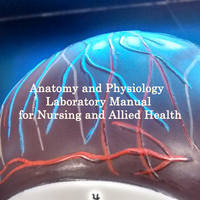Search
Books+
Searching 1,73 books
Search related to the career Radiologic Technologist
Role of a Radiologic Technologist in the Healthcare System
A Radiologic Technologist plays a crucial role in the healthcare system by providing essential diagnostic imaging services. They contribute to patient care and treatment plans by performing various imaging procedures and assisting physicians in diagnosing and treating medical conditions. Here are some key ways in which Radiologic Technologists contribute to the healthcare system:
1. Imaging Procedures: Radiologic Technologists are responsible for operating imaging equipment such as X-ray machines, computed tomography (CT) scanners, magnetic resonance imaging (MRI) scanners, and ultrasound machines. They follow protocols to obtain high-quality images of the patient's body, which are then used by physicians for diagnosis and treatment planning.
2. Patient Care: Radiologic Technologists ensure patient comfort and safety during imaging procedures. They explain the process to patients, answer their questions, and address any concerns. They position patients correctly and use radiation protection measures to minimize radiation exposure. Their compassionate approach helps patients feel at ease during potentially stressful procedures.
3. Image Evaluation: Radiologic Technologists are skilled at evaluating images for quality and accuracy. They assess the technical aspects of the images, ensuring that they are clear and suitable for interpretation by radiologists or other healthcare professionals. Their attention to detail and expertise in image evaluation contribute to accurate diagnoses.
4. Collaboration: Radiologic Technologists work closely with radiologists, physicians, and other healthcare professionals to provide comprehensive patient care. They communicate effectively to understand the specific imaging needs of each patient and collaborate in decision-making processes. Their expertise and insights assist in selecting the most appropriate imaging techniques for different medical conditions.
5. Radiation Safety: Radiologic Technologists are well-versed in radiation safety principles and practices. They adhere to strict protocols to protect themselves, patients, and others from unnecessary radiation exposure. By following established safety guidelines, they ensure that imaging procedures are performed with the utmost care and minimize potential risks.
6. Continuing Education: Radiologic Technologists engage in continuous learning and professional development to stay updated with the latest advancements in imaging technology and techniques. They attend conferences, workshops, and training programs to enhance their skills and knowledge. By staying current, they contribute to the improvement of healthcare practices and patient outcomes.
In summary, Radiologic Technologists play a vital role in the healthcare system by providing high-quality imaging services, ensuring patient comfort and safety, collaborating with healthcare professionals, and contributing to accurate diagnoses. Their expertise and dedication contribute significantly to the overall effectiveness and efficiency of healthcare delivery.
Source: Various AI tools
Watoa huduma ya afya
Books tagged healthcare providers
Searched in English.































